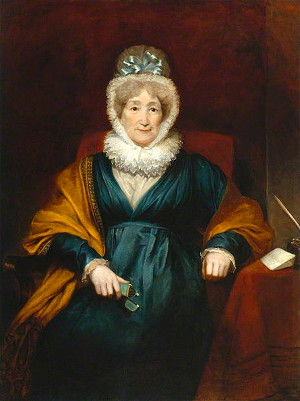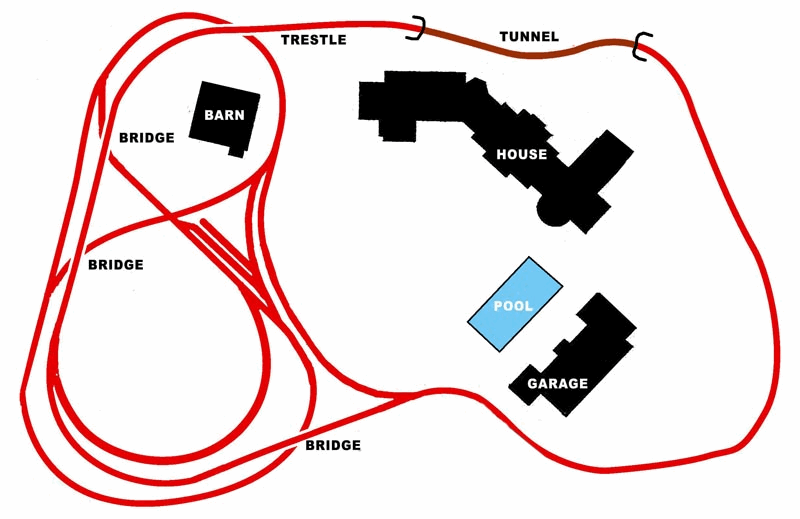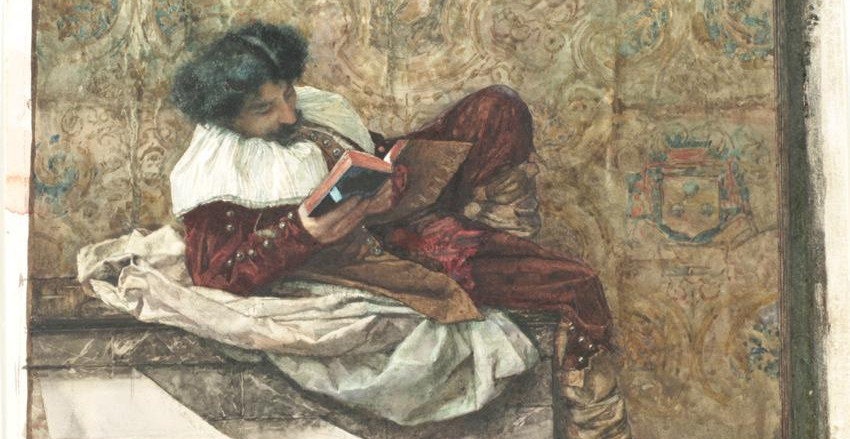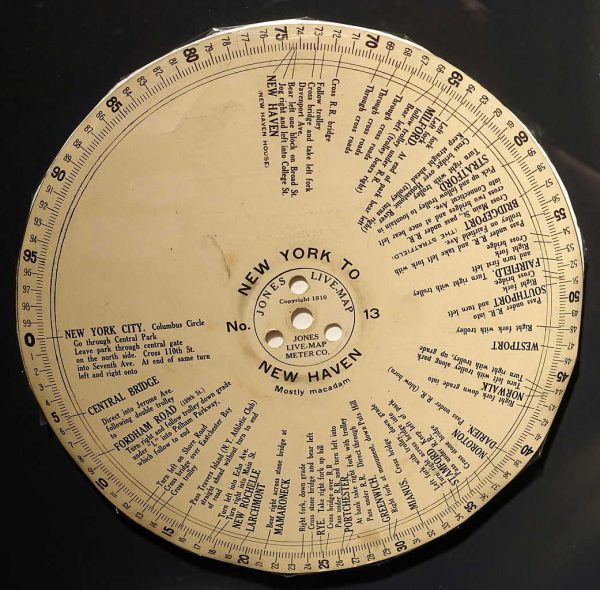A stranger asks you to shuffle an ordinary deck of cards and then cut it into three heaps. He’ll bet you $20 that at least one of the topmost cards is a king, queen, or jack. Should you take the bet?
The Jones Live-Map
Somewhat like George Boyden’s “vehicle signaling system” of 1916, Ernest Jones’ 1909 “Live-Map” navigator reckoned distance by monitoring a car’s wheels. But where Boyden’s invention guided the driver using a phonograph recording, Jones’ communicated directions via a printed paper disk that turned under a stationary pointer.
“Under its guidance the most muddling twists, turns and corners melt away behind you,” read the advertisement. “It is better than a Human Guide because it is always doing its work to the exclusion of everything else. … The Jones Live-Map emancipates you from slavery to great, flopping maps and profound route-books that you can’t make head or tail of without stopping.”
You could mount it on the dashboard, carry it in your lap, and even hand it to other occupants. The downside was that if you missed a turn you’d have to find a town on the route and recalibrate the device — and it cost $75 in 1909, or more than $2,000 today.
In a Word
velitation
n. a minor dispute or contest
devel
v. to beat or thrash
herile
adj. pertaining to a master
satisdiction
n. saying enough
Somebody once asked pool hustler Don Willis how good Glen “Eufaula Kid” Womack was.
Willis said, “I never saw him play.”
“What do you mean, you never saw him play? I heard you just beat him out of a lot of money.”
“I did,” Willis said, “but he never got to shoot.”
(From Robert Byrne’s Wonderful World of Pool and Billiards, 1996.)
Finding the Way
https://www.youtube.com/watch?v=UDBAT-gW6hg
Kohta Suzuno of Japan’s Meiji University has devised a way to solve mazes using the Marangoni effect: Fill the maze with milk, place an acidic hydrogel block at the exit, and introduce dye and a soap at the entrance. The pH change alters the surface tension and drives the dye toward the block. “In a typical experiment, the shortest path can be found and visualized within ~10s.” Suzuno has even used this technique to find the shortest distance between two points in Budapest, using a maze modeled on a street map.
(Kohta Suzuno et al., “Marangoni Flow Driven Maze Solving,” in A. Adamatzky, ed., Advances in Unconventional Computing, Vol. 23, 2017.)
Servant Trouble

In What the Butler Saw, E.S. Turner reviews the bizarre case of Hannah More, whose servants formed a conspiracy to rob and defraud her. “The most shameless peculation prevailed in the kitchen,” noted the Rev. Henry Thompson. “Orders were issued to the tradesmen in her name of which the servants reaped the benefit. Monies given for charity were appropriated by the servants.”
Worse, the servants held silent parties below stairs after More had retired for the night. At midnight, the servants from neighboring houses would converge on her home in Somerset, “some creeping through hedges, others descending down laurel walks or emerging from thickets” to enjoy “hot suppers laid out with parlour-like elegance.”
Eventually, tired of keeping quiet, they began to organize balls at a hall a mile away. A suspicious guest of More’s, spying from a window, saw the servants depart the house, dressed up and led by the housekeeper and coachman arm in arm. A scullery maid was left behind to admit the returning servants in time for morning prayers.
Told of this, More asked in a faltering voice, “What, Susan unfaithful, who has lived with me so many years?” “Yes.” “And Timothy, whose relations I have fed and clothed?” “Yes.” “And Teddy and Rebecca and Jane?” “Yes, all.” “What? Not one faithful?” “The whole are faithless!”
More resolved to leave them all and find a new home where she could spend her last days “in calmness, prayer, and praise.” She summoned the villains to the drawing room and told them, “You are no longer my servants. By deserting me and my house at midnight to pursue your revels, you all proved yourselves to be unworthy of my confidence. Your unprincipled conduct has driven me from my home, forced me to seek a refuge among strangers.”
She left a quarter’s wages for each of them and departed in a friend’s coach. “I am driven like Eve from Paradise,” she said, “but not by angels.”
The Carolwood Pacific Railroad

Walt Disney loved trains. In 1947, when he showed off his Lionel set to animators Ward Kimball and Ollie Johnston, they revealed that they had ridable sets in their backyards. So two years later, when Disney bought 5 acres in Los Angeles, he set about building his own ridable railroad, 2,615 feet long and completely surrounding the house. To placate his wife, he named the locomotive after her and added an S-curve tunnel to avoid her garden.
Disney retired the train in 1953 when a derailment left a 5-year-old girl with steam burns, but he credited the Carolwood Pacific Railroad with inspiring Disneyland, which is encircled today by a narrow-gauge steam railroad that draws 6.6 million passengers a year.
Paper Weight

For all books are divisible into two classes: the books of the hour, and the books of all time. Mark this distinction — it is not one of quality only. It is not merely the bad book that does not last, and the good one that does. It is a distinction of species. There are good books for the hour, and good ones for all time; bad books for the hour, and bad ones for all time.
— John Ruskin, Sesame and Lilies, 1864
Couplet
I slept, and dreamed that life was beauty;
I woke, and found that life was duty.
— Ellen Sturgis Hooper
Team Players
In human societies, if some individuals fail to cooperate in joint enterprises, there’s often an institution that imposes sanctions on them. If there isn’t, people seem to be willing to punish them directly, even at a cost to themselves. How does that behavior get started? How does a cooperative society “get off the ground”?
In 2007, researchers from Harvard University and the University of Vienna created a model in which individuals can choose either to receive a secure income or to play a risky game. Those who choose to play the game can either pay a fee or choose not to. The fee supports an investment, the proceeds of which are distributed among all the players. If enough of the players pay the fee, then everyone benefits. But if too many players opt out of paying the fee, then the remaining donors suffer.
In order to avoid that situation, the donors are allowed to impose a penalty on the freeloaders, but this incurs a cost for them, so not every donor will choose to enforce it. So overall there are four strategies: nonparticipants don’t play the game at all; freeloaders play but choose not to pay the fee; contributors pay the fee but choose not to impose penalties on the freeloaders; and enforcers play the game and punish the freeloaders.
After many rounds of computer simulation, the researchers were surprised to find that when participation in the game was mandatory, most of the players became freeloaders, and the game fell apart because no one was willing to pay the fees. Adding enforcers at this point couldn’t save the game — they could make no headway against the freeloaders.
But when opting out of the game was permitted — when players could choose to receive a secure income instead of playing the game — many of the freeloaders simply withdrew, leaving behind contributors, enforcers, and a few freeloaders. And now the resulting game was stablest if the enforcers dominated the group, since they ensured that everyone cooperated. If contributors began to outnumber enforcers — that is, if the group became unwilling to punish freeloaders — then the freeloaders took over and everything fell apart again.
“The paradoxical result is that cooperation can be enforced by penalizing freeloaders, but only if participation in the community is voluntary,” writes George Szpiro in A Mathematical Medley. “This reminds us that discipline in the dreaded foreign legion, which legionnaires join of their own free will, is legendary. In the compulsory army, on the other hand, it is often in rather short supply.”
(Christoph Hauert et al., “Via Freedom to Coercion: The Emergence of Costly Punishment,” Science 316:5833 [2007], 1905-1907, via George Szpiro, A Mathematical Medley, 2010.)
Math Notes
Andrew Bremner devised a magic square that expresses 652 as the sum of three squares in six different ways (the sum of each row and column):
152 202 602
362 482 252
522 392 02
(From Edward Barbeau, Power Play, 1997.)

